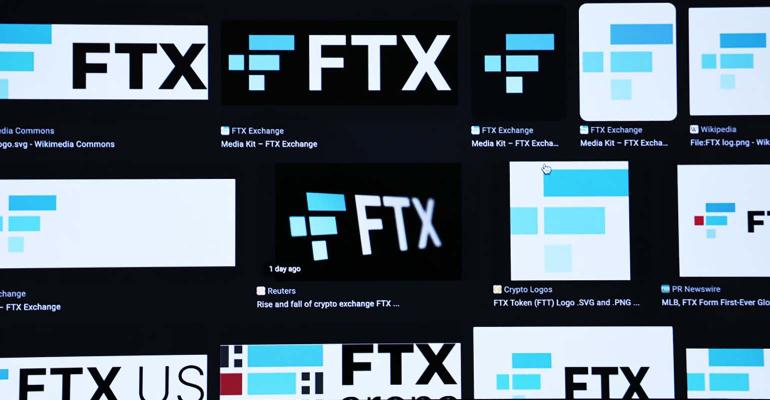The FTX story gets worse the more we learn. It will make a great movie someday, but right now it has the real-world implications of investors potentially out billions and the entire crypto ecosystem being shaken to its core. Regulators will be forced to step in and make sure nothing like this happens again, and this is one instance where more regulation is a good thing.
What Happened to FTX?
The recent events with FTX are part of the crypto collapse that started back in May, when the market downturn, coupled with regulatory uncertainty, resulted in steep losses across the crypto sector. Around the same time, a white paper was published that raised the first red flags about potential fraud and liquidity issues with FTX. After that, the downward spiral picked up speed.
FTX, once worth $32 billion, filed for bankruptcy on Nov. 11, after a “run on the bank” caused a liquidity crisis on the exchange and founder and former crypto rockstar Sam Bankman-Fried stepped down as CEO over allegations of mishandling client funds. The unprecedented speed of the collapse triggered panic selling across the crypto industry.
The newly appointed FTX CEO, John Ray III, was appalled at what he found when he looked at the books. He blasted Bankman-Fried for a complete lack of trustworthy data and financial safeguards. Ray, who led the restructuring of Enron, said he had never seen “such a complete failure” of corporate controls. He added that he had no confidence in the balance sheet statements of FTX, Alameda Research (the trading firm also founded by Bankman-Fried) or any of their subsidiaries.
According to Ray, the management and oversight at FTX was so bad that he needs to create basic corporate standards such as “accounting, audit, cash management, cybersecurity, human resources, risk management, data protection and other systems that did not exist, or did not exist to an appropriate degree.”
How Was This Allowed to Happen?
The postmortem on FTX will include much finger-pointing and questions about who was supposed to be looking out for investors. One major issue is that currently, there is no single regulatory agency responsible for crypto in the U.S. Instead, the limited oversight that exists is split among three agencies: the Securities and Exchange Commission, Commodity Futures Trading Commission and Internal Revenue Service. And that’s the problem—there is no coordinated approach, so no single entity in charge.
Since its inception 13 years ago, there have been arguments for and against regulation of the crypto ecosystem. Crypto’s biggest supporters have opposed regulations, claiming that too many rules would violate the decentralized ideal behind the blockchain and would ultimately stifle innovation. Those who have advocated for increased regulation claim it could help protect investors and bring a degree of stability to a sometimes chaotic market. The recent events have certainly strengthened the hand of the pro-regulation side.
Keeping crypto at arms-length may have made sense for regulators and lawmakers when investing in the volatile and immature asset class was limited to a small group of “true believers,” who understood the risk/reward nature of trading in digital assets. But once crypto became mainstream—with Super Bowl commercials—regulators needed to catch up and start building guardrails to protect the public. FTX shows that a lack of transparency and verification can wind up costing investors and consumers billions.
What Should Happen Now
Most immediately, the Department of Justice and SEC will need to understand the multiple conflicts of interest related to FTX and affiliated entities, and what was, or was not, disclosed to investors. If there is criminality, those responsible need to be prosecuted to the fullest extent of the law. At the same time, regulatory agencies need to quickly focus on preventing the next FTX.
But much more needs to be done.
In March, the Biden administration took a good first step in issuing an executive order that calls for government agencies to coordinate on six key crypto priorities: protecting consumers and investors, preserving financial stability, mitigating risks from illegal digital assets, promoting American competitiveness, ensuring financial inclusion and guiding responsible innovation.
Congress should stop slow-walking legislative efforts to address the gaping holes in financial regulations regarding digital assets and the blockchain. Once addressed, regulators should demand that crypto companies, exchanges and other critical infrastructure be domiciled in the U.S., where they can be subject to these newly expanded securities laws and oversight regime.
While the crypto industry may not welcome these changes, wealth management firms and institutions should actively advocate for enhanced transparency and regulation to protect investors, advisors and individual consumers.
The global crypto market reached more than $3 trillion last year. It’s past time for all those involved to get serious about a regulatory framework that can build public trust, while integrating digital assets, exchanges and currencies into the global financial system.
Mitch Avnet is the founder and a managing partner of Compliance Risk Concepts





